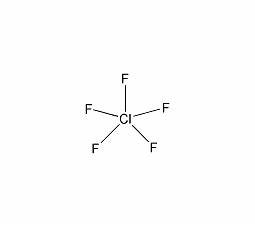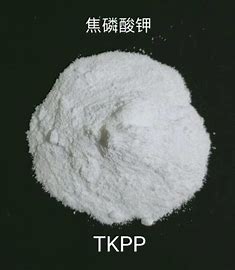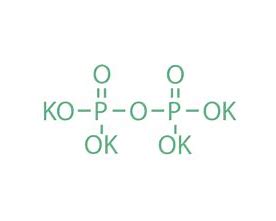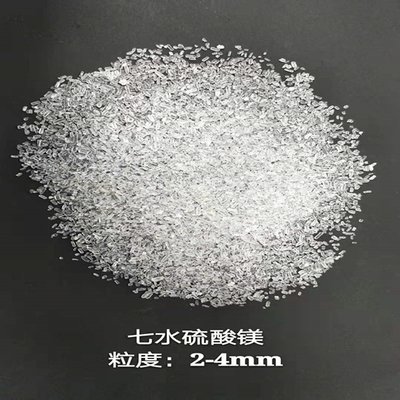Chlorine Pentafluoride/13637-63-3/ClF₅
I. Basic Information
| Item | Details |
|---|---|
| Chinese Name | Chlorine Pentafluoride |
| English Name | CHLORINE PENTAFLUORIDE |
| Aliases | Chlorine Pentafluoride, ClF5, chlorinefluoride(clf5), pentafluoro-λ5-chlorane, KNSWNNXPAWSACI-UHFFFAOYSA-N |
| CAS Number | 13637 – 63 – 3 |
| EINECS Number | 237 – 123 – 6 |
| Chemical Formula | ClF5 |
| Molecular Weight | 130.45 |
| Density | 1.774 (estimated) |
| Melting Point | -103°C |
| Boiling Point | -13.1°C |
| Appearance | Colorless gas |
| Exposure Limit | TLV-TWA 2.5 mg(F)/m³ (ACGIH, MSHA, and OSHA) |
| Hazard Symbol | O – Oxidizing substance |
| Safety Instructions | S17 – Keep away from combustible materials; S36/37/39 – Wear suitable protective clothing, gloves and eye/face protection |
| Dangerous Goods Transport Number | 2548 |
| Hazard Note | Oxidising agent |
| Hazard Class | 2.3 |
II. Introduction to Chlorine Pentafluoride
Chlorine pentafluoride (ClF5) exists as a colorless gas under normal temperature and pressure, but can also be a colorless liquid under certain conditions. It has a strong corrosive nature. Its molecular structure consists of one chlorine atom and five fluorine atoms, forming an octahedral configuration. This substance is extremely chemically reactive, unstable at room temperature, and prone to decomposition, releasing toxic fluorine gas. Therefore, extreme caution is required during operation and storage.

III. Application Areas
Chlorine pentafluoride plays a crucial role in various fields due to its unique chemical properties:
- Strong Oxidant in Organic Synthesis:In organic synthesis reactions, chlorine pentafluoride is often used as a strong oxidant, participating in fluorination and substitution reactions. Through these reactions, it helps synthesize a series of organic compounds with special properties, providing a powerful tool for the development of organic chemistry.
- Catalyst for Organic Reactions:It can also serve as a catalyst in various organic reactions. For example, in the catalytic fluorination of hydrazine and the arylation of halogenated alkanes, chlorine pentafluoride can significantly increase the reaction efficiency and reduce the requirements of reaction conditions, promoting the reaction to proceed as expected.
IV. Preparation Methods
There are mainly two methods for the preparation of chlorine pentafluoride:
- Direct Reaction of Fluorine and Chlorine:Chlorine pentafluoride can be prepared by directly reacting fluorine gas and chlorine gas. However, this reaction needs to be carried out at high temperatures, which requires high – end reaction equipment and strict control of reaction conditions. Parameters such as reaction temperature and pressure must be precisely regulated to ensure the smooth progress of the reaction and obtain a high yield.
- Reaction of Chlorine Trifluoride and Fluorine:Using chlorine trifluoride (ClF3) and fluorine gas as raw materials can also prepare chlorine pentafluoride. Compared with the direct reaction method, this method may have different requirements in terms of reaction conditions and operation difficulty. Nevertheless, various factors during the reaction process still need to be accurately controlled to ensure product quality and production safety.
V. Safety Precautions
Due to the strong corrosiveness and toxicity of chlorine pentafluoride, strict safety measures must be taken during its use and handling:
- Harm to the Human Body:Direct contact with chlorine pentafluoride can severely burn the skin and damage the respiratory tract. Inhalation of its vapor can cause extremely serious damage to the eyes and lungs, potentially leading to irreversible health problems.
- Safety Protection:When using chlorine pentafluoride, operators must wear appropriate protective equipment, such as professional chemical protective clothing, goggles, and respirators, to avoid direct contact with this substance.
- Storage Requirements:Containers for storing chlorine pentafluoride must be well – sealed and kept away from ignition sources and heat sources to prevent hazards caused by temperature changes or open flames. Meanwhile, the storage environment should comply with relevant safety standards and be regularly inspected and maintained.
- Disposal of Waste:When disposing of waste chlorine pentafluoride, it is essential to strictly follow relevant environmental protection regulations and safety operation procedures. Scientific and reasonable disposal methods should be adopted to ensure proper handling of harmful substances and avoid harm to the environment and human health.







